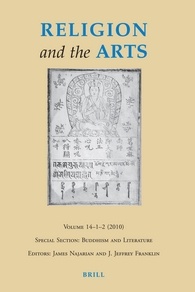
邓菲副研究员论文:门扉半开:中国丧葬艺术中的启门题材(Half-Open Doors in Chinese Funerary Art)发表于Religion and the Arts(2016,第20卷,BRILL出版)。
摘要:
人物启门是中国丧葬艺术中一类常见却十分神秘的图像,因启门之人多为女子,故又名“妇人启门”。这类图像源远流长,最早可追溯到东汉晚期,下至明清以及民国初年,其中以宋辽金元时期最为流行,出现在该时期的佛塔、地宫、墓葬图像之中,同时也是瓷枕、铜镜等器物的装饰题材。该题材因延续时间长,又出现在多种载体上,引起了许多学者的关注。但由于历代典籍对其少有记载,目前研究很难给出一个有效的解释,以适应它的各种载体。本文是对该题材在图像学意义上的一次尝试性的研究,通过对现有资料的考察,希望从启门图像源流、影响、文化内涵等方面入手,对这一问题的认识有所推进,理解图像背后所涉及的观念与信仰。
This article explores a mysterious but well-studied pictorial subject in Chinese visual art, namely the half-open door. The scene often shows a female figure standing in or emerging from the middle of two door-leaves, suggesting a path or an access to a certain space and also indicating a view incompatible with what the viewer has already seen. This pictorial theme frequently adorns stone sarcophagi and tomb walls in northern China from the late eleventh to the thirteenth centuries. By examining the forms and meanings of the motif, this study attempts to demonstrate the ways in which the half-open door was employed in funerary art and helped people to visualize prevailing ideas about the afterlife.